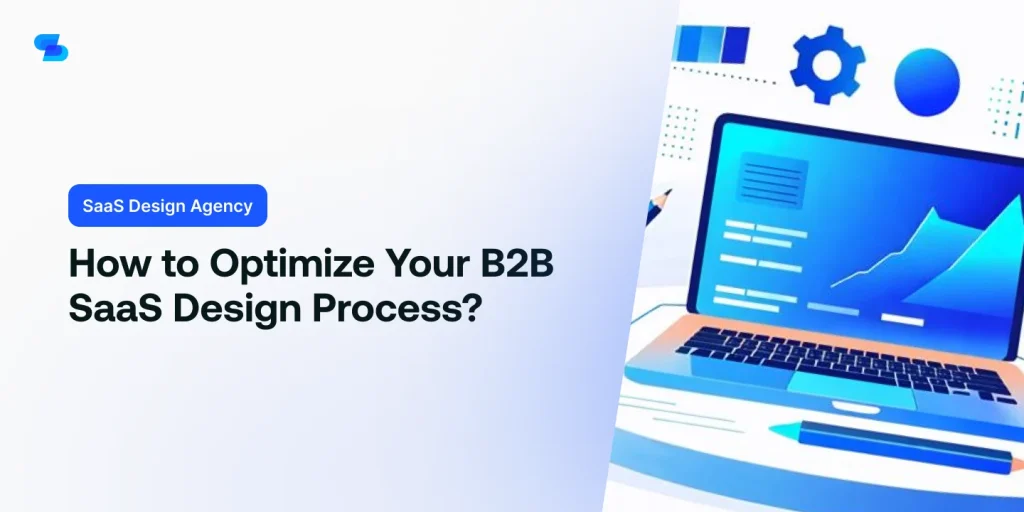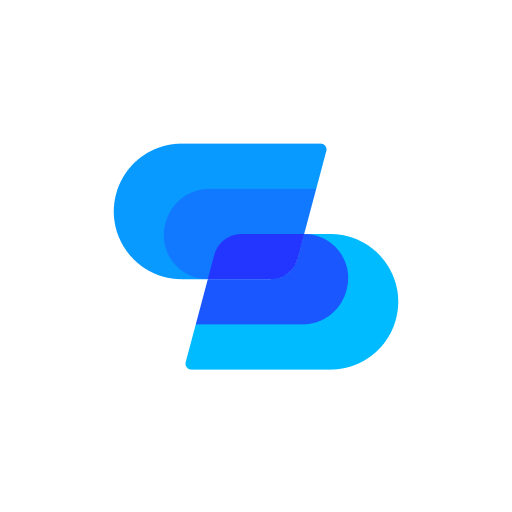You’ve heard it all before: user-centered design, agile methodologies, design systems. But what if the key to optimizing your B2B SaaS design process isn’t in the buzzwords? What if it’s in the gaps between them? Consider this: your process might be holding you back precisely because you’re following the rules too closely. It’s time to challenge the status quo. Rethink your approach, question your assumptions, and dare to break a few best practices. After all, innovation doesn’t come from following the crowd. Ready to shake things up and discover what’s really possible in B2B SaaS design?
Define Clear Design Objectives
A compass for your design journey, clear objectives steer your B2B SaaS project away from the treacherous waters of scope creep and feature bloat. Don’t let vague goals sink your ship before it sets sail. Sharpen your focus with laser-like precision.
Start by interrogating your product’s purpose. What pain points does it solve? Who’s your target user? Don’t settle for generic answers. Dig deeper. Unearth the specific, measurable outcomes your design must achieve.
Now, prioritize ruthlessly. Not all objectives are created equal. Rank them based on user impact and business value. Be prepared to sacrifice sacred cows. Your design can’t be all things to all people.
Transform your objectives into actionable design principles. These will be your North Star, guiding every decision from wireframes to color palettes. Make them concrete, not fluffy platitudes.
Embrace User-Centered Design Principles
Consistently putting users at the heart of your design isn’t just good practice—it’s your secret weapon for B2B SaaS success. Forget the old playbook; user-centered design is your new north star. It’s not about what you think looks good—it’s about what works for your users.
Start by ditching assumptions. Your users aren’t you. They’re busy professionals with specific needs and pain points. Dive deep into their world through interviews, surveys, and observation. Uncover the real problems they’re facing, not just the symptoms.
Now, challenge everything. Every feature, every button, every workflow should earn its place. If it doesn’t serve the user, it’s dead weight. Prototype relentlessly and test with real users. Their feedback is gold—mine it ruthlessly.
Implement Agile Design Methodologies
Ditch the waterfall and embrace the whirlwind of Agile design.
You’ll turbocharge your B2B SaaS process with sprint-based cycles, allowing rapid iterations and quick pivots.
Sprint-Based Design Cycles
Embrace the chaos of innovation with sprint-based design cycles, where your B2B SaaS product evolves at breakneck speed. These short, intense bursts of creativity aren’t for the faint-hearted. They’re your ticket to rapid iteration and market domination.
Forget month-long design phases. You’re now operating in two-week sprints. Day one: Set goals. Day five: Prototype. Day ten: Test. Rinse and repeat. It’s a relentless pace that separates the innovators from the imitators.
Your team becomes a lean, mean, design machine. No more endless meetings or analysis paralysis. You’re building, testing, and improving in real-time. Feedback isn’t a luxury; it’s your lifeblood.
Sprint-based cycles force prioritization. You can’t do everything, so you’ll do what matters. That feature you thought was essential? If it doesn’t fit the sprint, it wasn’t that important after all.
But beware: This isn’t for control freaks. You’ll release imperfect products. You’ll pivot on a dime. You’ll make mistakes, fast and often. That’s the point. In B2B SaaS, the perfect is the enemy of the profitable. Embrace the sprint, and watch your design process—and your product—transform.
Cross-Functional Team Collaboration
Silos are for grain, not for your design team—smash them with cross-functional collaboration that’ll make your B2B SaaS product sing. Forget the old-school approach of designers working in isolation. It’s time to mix things up and create a melting pot of creativity.
Bring developers, marketers, and customer support reps into your design process. They’re not just observers; they’re co-creators. Developers can flag technical constraints early, saving you from designing the impossible. Marketers know your target audience inside out—let them shape user personas. Customer support? They’re your direct line to user pain points.
Set up regular cross-functional meetings. Make them short, sweet, and action-packed. Use collaborative tools like Figma or Miro to keep everyone on the same page. Encourage wild ideas and constructive criticism. Remember, the best solutions often come from unexpected places.
Don’t just pay lip service to collaboration. Give team members ownership over specific aspects of the design. A developer might own the technical feasibility review, while a marketer oversees brand consistency. This shared responsibility breeds innovation and guarantees buy-in from all departments.
Leverage Design Systems
You’re wasting time reinventing the wheel with every design.
Embrace design systems to standardize your UI components and slash your workflow inefficiencies.
Standardize UI Components
Release the power of design systems to streamline your B2B SaaS UI components and supercharge your development process. Standardization isn’t boring; it’s your secret weapon. Ditch the chaos of reinventing the wheel with every project. Instead, build a rock-solid library of reusable UI components that scream consistency and efficiency.
Think of your UI components as LEGO bricks. Each piece is meticulously crafted, ready to snap into place. Buttons, forms, modals – they’re all there, waiting to be deployed. This isn’t just about aesthetics; it’s about speed and scalability. Your dev team will thank you when they can whip up new features faster than ever before.
But don’t stop at the basics. Push the envelope with smart, context-aware components. Imagine dropdowns that adapt to user behavior or cards that morph based on content type. This is where standardization meets innovation.
Streamline Design Workflows
Turbocharge your design process with three game-changing strategies that’ll transform your design system from a static library into a living, breathing powerhouse.
First, embrace automation. Ditch manual updates and leverage tools like Figma’s auto-layout and variants. Create dynamic components that adapt to content changes, slashing design time and boosting consistency. Set up design tokens to sync with your codebase, guaranteeing seamless handoffs to developers.
Second, implement a version control system for your design assets. Treat your design files like code. Use platforms like Abstract or Versions to track changes, collaborate efficiently, and maintain a single source of truth. This approach eliminates confusion and keeps everyone on the same page.
Lastly, adopt a modular design approach. Break down complex interfaces into reusable building blocks. Create a component library that’s easily accessible to your entire team. This method speeds up prototyping, reduces decision fatigue, and guarantees scalability as your product grows.
Prioritize Collaborative Workflows
Ditch the solo act; B2B SaaS design thrives on teamwork. Your design process isn’t a one-person show. It’s time to embrace collaborative workflows that’ll skyrocket your productivity and innovation.
Start by demolishing those metaphorical cubicles. Create open channels for constant communication between designers, developers, and product managers. Use tools like Figma or Sketch for real-time collaboration. Let ideas flow freely, crash into each other, and spark something brilliant.
Break down complex projects into bite-sized tasks. Assign roles clearly, but encourage cross-functional input. A developer’s perspective might just be the key to revealing a tricky UI problem.
Implement regular design sprints. These intense, time-boxed sessions force rapid ideation and prototyping. They’re perfect for tackling stubborn challenges or exploring new features.
Don’t forget user feedback. Integrate it seamlessly into your workflow. Use tools like UserTesting or Hotjar to gather insights continuously. Let this data fuel your collaborative discussions and drive iterations.
Utilize Prototyping and Testing
Prototypes are your secret weapon in the B2B SaaS design battlefield—wield them wisely. Don’t waste time on pixel-perfect mockups; instead, embrace rapid prototyping. Slap together rough sketches, clickable wireframes, or even paper prototypes. Speed trumps perfection here.
Test early, test often. Your initial ideas probably suck—and that’s okay. Prototyping helps you fail fast and learn faster. Get your half-baked concepts in front of real users ASAP. Watch them struggle, listen to their complaints, and absorb their feedback like a sponge.
Don’t coddle your darlings. Be ruthless in killing off features that don’t resonate. Every unnecessary button is a potential landmine for user confusion. Simplify, iterate, repeat.
Remember, B2B users are humans too. They crave intuitive interfaces and smooth workflows just like anyone else. Use prototypes to validate your assumptions about their needs and pain points.
Leverage prototyping tools that allow for quick iterations. Figma, InVision, or even good old PowerPoint can work wonders. The goal isn’t to impress with fancy designs—it’s to validate concepts and gather actionable insights.
Integrate Data-Driven Decision Making
Three words: data doesn’t lie. Your gut instincts and personal preferences? They’re as reliable as a chocolate teapot in the B2B SaaS design world. It’s time to ditch the guesswork and embrace cold, hard facts. Your users are leaving breadcrumbs everywhere – it’s your job to follow them.
Start by setting up robust analytics. Track everything: clicks, time spent, drop-off points, conversion rates. But don’t stop there. Immerse yourself in user feedback, support tickets, and sales calls. These goldmines of information reveal what your users really think, not what you hope they think.
Now, here’s the kicker: actually use this data. Don’t let it gather dust in some forgotten dashboard. Make it the backbone of your design decisions. A/B test relentlessly. Iterate based on user behavior, not boardroom opinions. If the data says your beloved feature is a dud, kill it. No mercy.
Continuously Refine and Iterate
In B2B SaaS design, stagnation is death; you’re either evolving or you’re extinct. Continuous refinement isn’t a luxury—it’s your lifeline. Forget the notion of a ‘finished’ product; it’s a myth that’ll sink your ship faster than an iceberg.
Your design process should be a perpetual motion machine. Launch, gather feedback, analyze, improve, repeat. It’s not rocket science, but it demands relentless dedication. Don’t wait for perfection; ship early and often. Your users are your best beta testers, so let them break things.
Embrace failure as your greatest teacher. Each stumble is a stepping stone to innovation. Track user behavior obsessively, but don’t just collect data—act on it. If a feature’s unused, kill it. If users struggle, simplify. Your product should evolve like a living organism, adapting to its environment.
Challenge every assumption. Yesterday’s brilliant solution might be today’s roadblock. Foster a culture of constructive dissatisfaction. Encourage your team to question everything, even their own creations. Remember, in the B2B SaaS world, complacency is the silent killer. Keep moving, keep refining, or prepare to be left behind.
To Wrap Up
You’ve got the blueprint. Now, shake things up. Ditch the cookie-cutter approach and inject your B2B SaaS design with personality.
Challenge conventions, but don’t lose sight of user needs. Embrace the chaos of collaboration and let data be your North Star.
Remember, your design isn’t set in stone – it’s clay waiting to be molded. Keep pushing, keep refining, and never settle for ‘good enough.’
Your users deserve better, and so do you.

